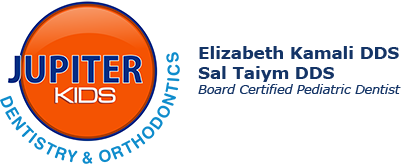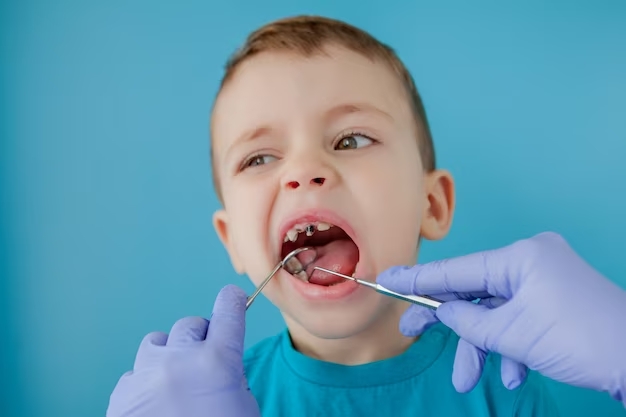One crucial aspect in nurturing our children’s health often takes the spotlight – their dental care. As parents, we are all too familiar with the constant battle against cavities, those tiny troublemakers that can wreak havoc on our kids’ precious smiles. While brushing and flossing remain the pillars of oral hygiene, a powerful ally exists in our quest for cavity-free chompers: dental sealants. In this comprehensive blog, we delve into dental sealants, uncovering their role in safeguarding our children’s teeth and paving the way for brighter, healthier smiles.
What Are Dental Sealants?
Dental sealants are thin, protective coatings applied to the chewing surfaces of molars and premolars. These back teeth have grooves and pits that can be difficult to clean properly, making them more susceptible to cavities. Sealants act as a barrier, sealing off these vulnerable areas from bacteria and food particles that can lead to tooth decay.
The Importance of Dental Sealants for Kids
Children are more prone to cavities due to their developing oral hygiene habits and the nature of their teeth. Even the most diligent brushing might only effectively reach some tiny crevices on their molars. This is where dental sealants come to the rescue. By creating a smooth and protective layer, sealants prevent the accumulation of bacteria and food debris, reducing the risk of cavities by up to 80%.
The Dental Sealant Application Process
- Dental Examination: The first step is a thorough dental examination by a dentist. The dentist will assess the child’s teeth to determine if dental sealants are suitable. Dental sealants are typically applied to the molars and premolars, the teeth located at the back of the mouth.
- Cleaning: Before applying sealants, the teeth are cleaned to remove debris or plaque. This ensures that the sealant adheres properly to the tooth surface.
- Isolation: The teeth being treated will be isolated and kept dry during the application process. This may involve using cotton rolls or a special device to dry the area.
- Etching: The dentist will apply a mild acidic solution (usually phosphoric acid) to the chewing surfaces of the teeth. This etching process creates a rough surface that helps the sealant bond securely to the tooth.
- Rinsing and Drying: After a brief etching period, the teeth are rinsed to remove the acid and dried thoroughly.
- Sealant Application: The dental sealant material is applied to the grooves and pits of the teeth. The sealant is a thin, plastic-like material that flows into the natural contours of the teeth. It acts as a protective barrier, sealing food particles and bacteria that can lead to cavities.
- Curing: In some cases, a special light may harden the sealant and ensure it bonds securely to the tooth surface.
- Final Check and Evaluation: Once the sealant has hardened, the dentist will check the bite to ensure that it’s not interfering with the child’s natural chewing motion. The overall placement and bonding of the sealant will be evaluated.
- Post-Application Instructions: The child can eat and drink normally after the sealant application. However, avoiding sticky or hard foods that could dislodge the sealant is a good practice. Routine oral hygiene practices, including regular brushing and flossing, should continue.
- Follow-Up: The dentist will typically schedule follow-up appointments to monitor the condition of the sealants and make any necessary adjustments.
Long-Term Benefits Of Dental Sealants For Children
Dental sealants offer significant long-term benefits for children’s oral health. Dentists in Allen, TX, often recommend dental sealants as a preventive measure to protect children’s teeth from cavities and maintain their oral well-being. Here are some key long-term benefits of dental sealants:
- Cavity Prevention: Dental sealants create a protective barrier over the chewing surfaces of molars and premolars, which are susceptible to cavities due to their grooves and pits. By sealing these vulnerable areas, dental sealants help prevent the accumulation of food particles and bacteria that can lead to cavities.
- Reduced Risk of Decay: Children’s teeth are still developing, and their oral hygiene habits may not be perfect. Dental sealants provide an added defense against decay, even if brushing and flossing routines must be consistently followed.
- Pain Prevention: Cavities can cause discomfort and pain. Dental sealants help children avoid the pain associated with dental problems, allowing them to enjoy a pain-free childhood.
- Improved Oral Health Habits: Dental sealants can encourage children to become more conscious of their oral health and establish healthy oral hygiene habits from a young age.
- Preservation of Natural Teeth: Dental sealants help preserve the structure of natural teeth by preventing invasive treatments that may require removing parts of the tooth for restoration.
Maintaining Sealant Effectiveness For Improved Oral Health
- Consistent Dental Check-ups: Regular visits to the dentist are crucial. Schedule routine check-ups, allowing the dental professional to monitor the condition of the sealants and assess your child’s overall oral health. Timely intervention can address any issues before they escalate.
- Diligent Oral Hygiene Practices: Uphold a structured oral hygiene routine by emphasizing consistent brushing and flossing. Educate your child about proper brushing techniques and the importance of thorough flossing to maintain cleanliness around the sealants and prevent plaque buildup.
- Protective Measures during Physical Activities: Consider introducing a custom-fitted mouthguard for children active in sports or recreational activities. This additional layer of defense safeguards the sealants from potential impact during play, preserving their integrity.
- Regular Sealant Inspections: Occasionally inspect the sealants for any signs of wear, chipping, or detachment. If you notice any issues, consult your dentist for advice on solutions.
As parents, it’s our responsibility to arm our children with the best tools for a healthy future, and dental sealants unquestionably earn a place in this arsenal. These invisible protectors act as formidable barriers against cavities, standing guard over the vulnerable grooves and fissures of our kids’ teeth. The simplicity of the application process, combined with the significant reduction in cavity risk, makes dental sealants a smart investment in our children’s long-term oral health. By saying goodbye to cavities through the application of dental sealants, we can usher in an era of brighter smiles and happier dental visits, setting our children on a path toward a lifetime of confident and carefree grins.


